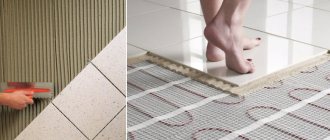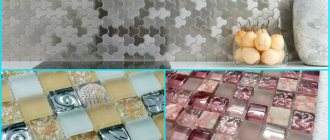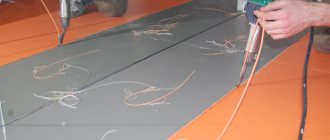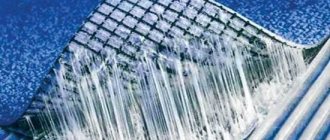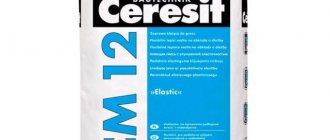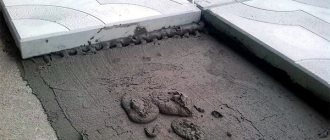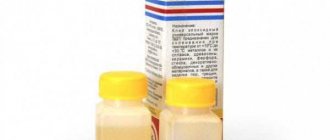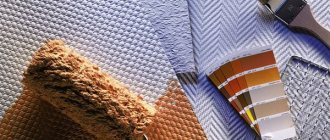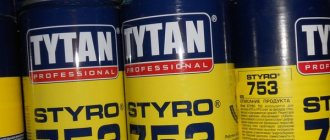How to dilute ethyl acetate?
It is good to dilute kleiberite with ethyl acetate.
Interesting materials:
What is the name of the barbecue grill? What is the elastic band at the bottom of a sweater called? What is a rhyme in one line called? What are the drawings on the walls called? What is the name of the picture at the beginning of the chapter? What is the name of a rhombus in cards? What is the growth of urban population called, the increasing role of cities and the spread of urban lifestyle? What is a multi-input socket called? What is the name of Christmas Day? What is the name of the selfie stick?
Scope of application
Having excellent characteristics, polyurethane adhesive is used in areas that are subject to deformation and impact. The scope of application therefore extends to:
- In the synthetic covering of playgrounds.
- Mechanical engineering, construction.
- Insulation work of drainage pipes.
- Gluing stones and slabs to various planes.
- Finishing floor work in industrial buildings, home conditions.
- Repair of shoes, furniture, etc.
Flaws
Adhesive polyurethane mixtures still have disadvantages, which are important to familiarize yourself with before use. The main disadvantages include the following:
- They do not tolerate prolonged exposure to very high temperatures. Sealants of this type cannot be exposed to temperatures of +120 degrees for a long time.
- Poor level of adhesion with wet substrate. Experts do not recommend applying adhesive composition to coatings with humidity levels greater than 10%. In this case, the connection will be unreliable.
- Hardening speed. Some compounds can harden very quickly, which will complicate the process.
That's probably all.
Application rules
Before applying the adhesive layer, you must carefully prepare the surface: remove dirt, remove old coatings, remove dust, degrease. The latter will help remove residual oil and fat deposits. Alcohol and solvent are used as a degreaser.
Before starting work, use protective equipment and check the serviceability of the ventilation system.
Application is carried out evenly, in a thin layer. If the composition contains a solvent, then the glue is applied to both surfaces to be bonded.
If the surface is porous, then after the first layer, wait up to 5 minutes and apply the second. To increase the setting speed, the adhesive side is slightly moistened with water. This method speeds up chemical reactions.
When connecting planes, strong compression is required, which will enhance adhesion.
When using aerosol-type adhesive foam, spraying must be done at a distance of 8 centimeters from the edge. Maintain a distance of 10–20 centimeters between the adhesive strips.
After the layer has dried for 1.5 hours, it is heated with a construction hairdryer (for industrial work) or a household one for up to five minutes, after which the joints are compressed with a press.
Sunflower oil
It is not suitable for all types of sealants, but it usually works well with silicone. Take regular vegetable oil and heat it a little in a saucepan. You don’t need to use a lot of oil, about 50-100 grams is enough. Don't heat the oil too hot or you will burn your hands. After heating, apply the oil to your hands.
Oil alone will not remove the sealant. You need to add a little washing powder. You can completely wash your hands with it or just wipe off areas with sealant stains. The latter option is more preferable, since modern powders are very caustic. After traces of contaminants have disappeared, you should thoroughly wash your hands with running water.
Characteristics and properties
Polyurethane glue is popular for good reason; it has its own positive properties that set it apart from other products. The components are responsible for the characteristics; the adhesive layer creates a seam that can withstand temperature changes. Resistance is manifested at temperatures from -40 to +120 degrees. A high degree of adhesion is achieved on different types of base.
But it is important to glue parts to them, taking into account the following rules:
- It will be possible to glue the materials at a temperature of +15 degrees in the room;
- Reliability of adhesion requires waiting a certain period of time for the curing process to be completely completed;
- Polyurethane foam-based adhesive also has a water-resistant property, so it is resistant to biological formations.
Polyurethane foam adhesive has different shades, which makes it clear what purpose it is suitable for.
Resistance is manifested at temperatures from -40 to +120 degrees.
All about polyurethane glue
By Max
Last updated
Nov 11, 2020
Synthetic compounds are often used to connect various materials. Let's consider the technical characteristics, types, rules for using such compounds. We’ll also learn how to clean polyurethane glue and prepare it yourself.
Properties
Polyurethane-based materials are of synthetic origin. The product is the result of the interaction of various isocyanate group compounds. The technical characteristics of a particular composition depend on their composition.
Let's look at what polyurethane glue is. This is a viscous translucent mass, the color of which ranges from light beige to dark brown. In addition to the main component, the composition contains hydroxyl-containing compounds of an acidic nature. To adjust certain characteristics, the following additives are used:
- water, alcohol, salt compounds, additives containing alkali metals for speed of hardening;
- synthetic resins for adhesion;
- organic solvents for viscosity.
The polymer composition is characterized by the following properties:
- inertness to biological and corrosive effects;
- resistance to temperature changes ranging from -60 to +150°C (depending on the composition, heating may be more powerful);
- resistance to oils, organic solvents, water, radiation;
- plasticity, preservation of the structure and quality of the dry residue under vibration and temporary mechanical loads;
- high adhesion to all materials (wood, glass, plastic, metal, stone).
The shear strength of polyurethane adhesive after hardening can be 2-26 MPa. The indicators depend on the structure of the treated surfaces. Consumption is also determined by the nature of the objects. The values range from 150 to 500 g/sq.m.
The hardening process occurs due to contact of the viscous mass with moisture contained in the air. Therefore, drying occurs sequentially, starting with the formation of a surface film. Based on this, the working time of the glue for making adjustments is at least 20 minutes, maximum 3 hours.
Polyurethane adhesive consists of one or two main components and functional fillers. Materials are classified according to their basic composition. In particular: with or without hardener.
Polymer adhesive tends to increase in volume during drying due to the foaming process. This has a positive effect on the ability of the material to penetrate into pores. But if it is necessary to create thin-layer gluing, objects must be kept under pressure throughout the entire hardening period.
One-component
The one-component synthetic adhesive is ready for use and, in sealed packaging, retains its properties for 12 months. After opening, the recommended period of use is halved. The rate of hardening depends on the type of resins contained in the composition and the ambient temperature. The higher it is, the faster the process of dry residue formation occurs. The thermometer reading limit is +100°C.
Two-component
Two-component glue is sold in two separate containers. The first contains the working base without the addition of resins and solvents. The mass has a thicker consistency than the ready-to-use one-component analogue.
Alcohol
Alcohol is actually a universal solvent, suitable for cleaning not only sealants, but also the most durable adhesives. You can use ethyl or isopropyl alcohol. The latter is used for technical purposes. It is recommended to wash the skin with a cotton pad or cloth soaked in alcohol.
If the solution is already very hard, you can apply a little alcohol to it and wait until it softens. After this, use a cotton pad to gently wipe off the remaining sealant. Then your hands should be washed thoroughly with water to remove any remaining alcohol. You shouldn't rub your hands with alcohol for too long; it can dry out and even burn your skin.
Chemists forum
How to dissolve frozen and hardened sealant?
- print version
- 1
How to dissolve frozen and hardened sealant?
- Quote
Post by Klopster » Wed Aug 15, 2007 9:38 am
- Quote
Post by aversun » Wed Aug 15, 2007 10:32 am
- Quote
Post by Serty » Wed Aug 15, 2007 10:42 am
Re: How to dissolve frozen and hardened sealant?
- Quote
Post by avor » Wed Aug 15, 2007 1:49 pm
—How can you dissolve rubber or sealant (any kind, including silicone)? It's a funny question to ask. What will dissolve any sealant will dissolve any plastic.
In order for the solvent to act selectively, it is necessary to take advantage of the difference in the properties of the sealant and plastic.
If the plastic is PVC, ABS, Polyolefin, and the sealant is silicone, then hydrochloric acid may help. If the plastic is polycarbonate, plexiglass, polyester, polyurethane, then acid can partially destroy them.
If you take rubber-based sealants such as 88 and rubber adhesives, then they can be softened with mixtures of xylenes and toluene, but any polystyrene-based plastic will leak, PVC will leak, and to a lesser extent (almost imperceptibly) plexiglass, polycarbonate, polyester, and may become cloudy.
At the same time, you need to keep in mind that sealants are polymers, and even cross-linked, as a rule. So their dissolution is not an instantaneous process and they cannot be dissolved like sugar in water. At least by soft selective means.
Kinds
Polyurethane adhesives are produced in two types:
- One-component. Based on previously synthesized polyurethanes. They are produced in sealed containers; unopened packages are stored for a year. At the same time, all adhesive abilities are preserved. Hardening occurs quickly, when exposed to temperatures up to 100 degrees. For viscosity, acetone and solvents are added. To increase the stickiness of one-component polyurethane adhesive, synthetic resins are introduced.
- Two-component. It consists of an isocyanate oligoester. When they interact, polyurethane is formed, which acts as the main adhesive. The composition is viscous, elastic, and quite durable. The initial setting is durable, for decades. Tolerates humidity and temperature changes well.
How long does it take to dry?
The drying process depends on the components that are added to the polyurethane adhesive. The average hardening time ranges from 20 minutes to an hour. Initially, to ensure setting, it is necessary to tightly connect the surfaces for 5–7 minutes, then place under a press for up to an hour.
Often excess mass appears from the seam. Such excess is removed mechanically after complete hardening.
Also, the drying period depends on the temperature where gluing occurs. When exposed to the hot method, hardening will occur within 4 hours.
Under normal conditions described in the instructions, hardening occurs within a day or two.
TOP best manufacturers
Among the many TMs, the best ones are highlighted:
- Moment Crystal – polyurethane, transparent from . Bonds various types of materials. Not used for gluing objects that will subsequently be in contact with food. Ease of use. If all application technology is followed, it ensures reliable, durable adhesion. The composition is moisture-temperature resistant. When the composition freezes, it does not lose its original properties.
- SOUDAL PUROCOL is a professional one-component polyurethane adhesive for wood. Glues wood to various planes. The composition does not contain solvents. Hardening occurs during the drying process. Application is carried out on one of the sides to be glued. The seam is strong and reliable.
- Duayen is a two-component adhesive used for work with rubber products. The mixture is frost-moisture resistant. Not affected by chemicals. Has a high hardening rate. The seam is durable and its properties are maintained throughout its entire service life.
- PURTIS is a one-component polyurethane adhesive for exterior use. Used for gluing wall panels and mineral wool. After hardening, it is harmless to the body. Water and frost resistant.
- Anles 88 M is a one-component, transparent adhesive composition. After hardening, a transparent seam is formed. It is resistant to dampness, frost, alkaline and acidic substances. It also has flexibility and increased strength.
Storage
If the packaging has not been opened, has a production seal and the temperature regime is observed (10–30 degrees), then the shelf life is 1–2 years.
Storing polyurethane glue near heating elements and direct exposure to ultraviolet radiation is not allowed.
If the package with glue is opened, then the mass should be used up within six months. Storage should be carried out in tightly closed containers, without access to air or moisture. To prevent internal hardening at the exit from the tube, it is turned over onto the lid and stored in a vertical position.
We recommend watching the video:
What is all the repairs based on? Removing glue and tape
After the renovation, the room is pleasing to the eye. New wallpaper. Shining double-glazed windows. Laminate laid in even rows... But as soon as you come closer and take a closer look, unpleasant to the eye stains from adhesive tape on the plastic, drops of glue, and traces of double-sided tape immediately appear. The tape itself has long been removed, but the dirt remains. What to do, how to clean the glue? First you need to understand what type of surfaces need to be cleaned. After all, it’s one thing to remove residual substances from furniture, another thing to remove from laminate or plastic. It is also worth considering the type of glue itself. Here are some effective ways.
Solvents
You can use acetone or gasoline as solvents. If pure acetone is not available, you can resort to nail polish remover, preferably colorless. You can also use regular paint thinner. These products have a strong odor and toxicity, so it is better to wash your hands outside, on a balcony or in a well-ventilated area.
- Apply the product to a cloth or cotton pad.
- Gradually scrub away dirt. There is no need to apply much force as the solvent may damage the skin.
- After cleaning, wash your hands well with toilet soap. It is better to spend a few minutes on this to completely rinse off any remaining solvent.


